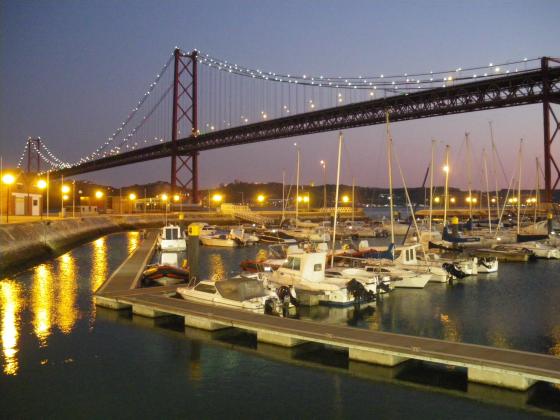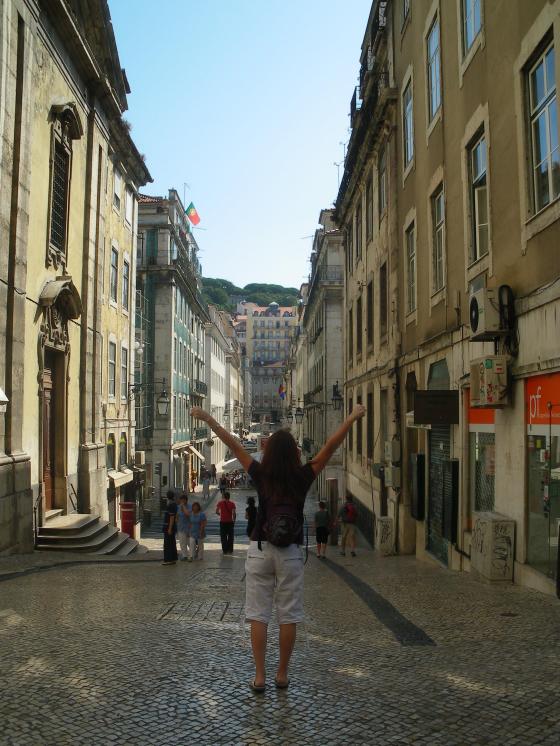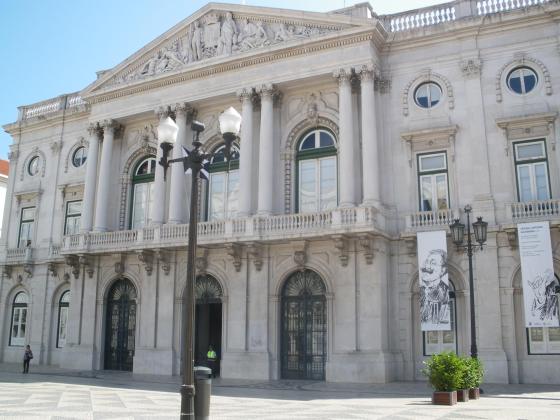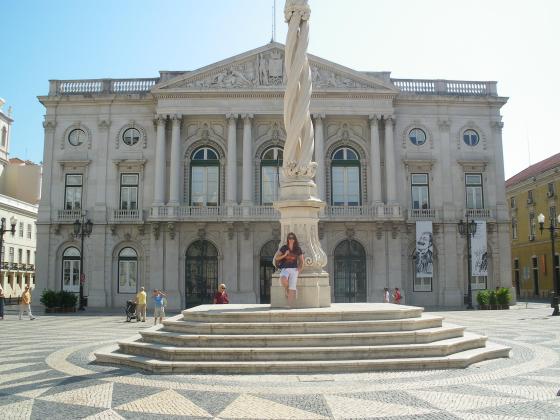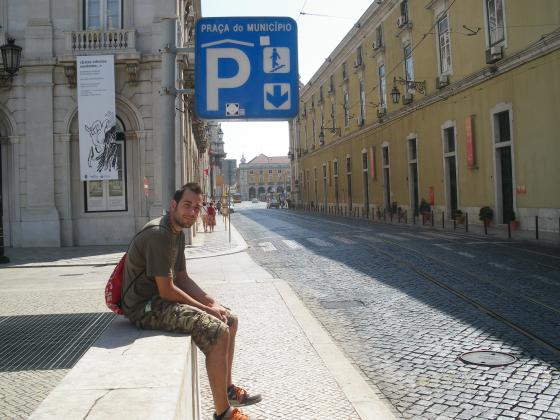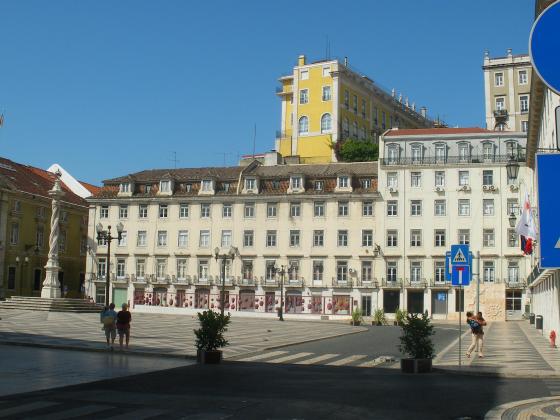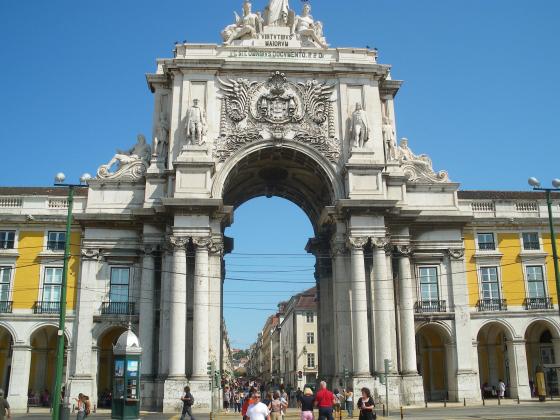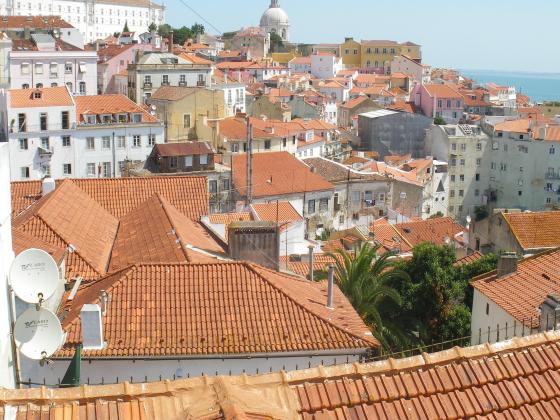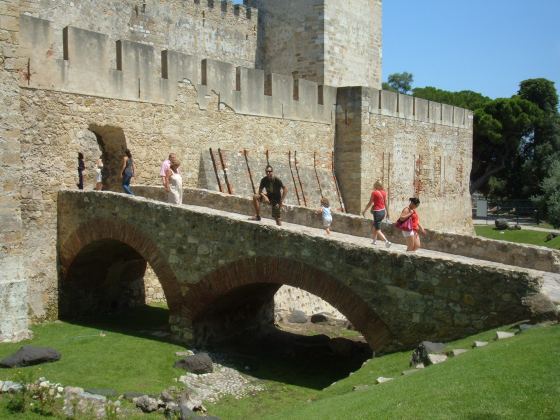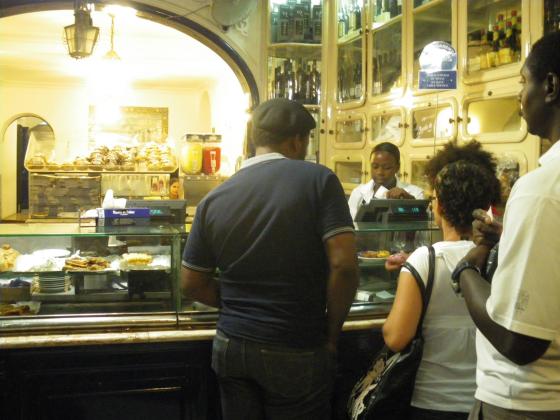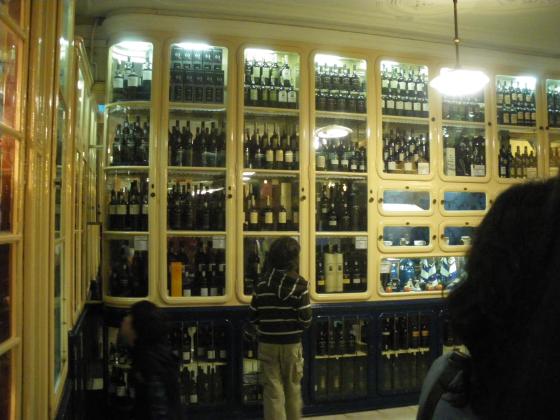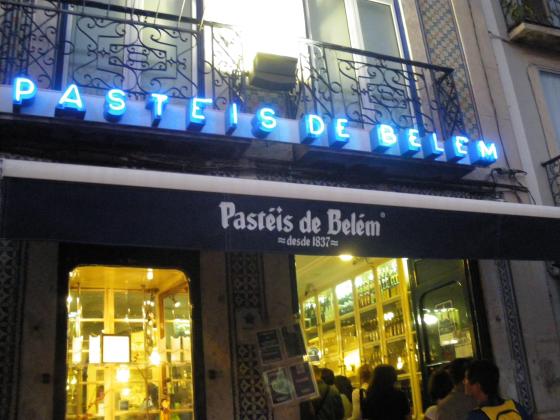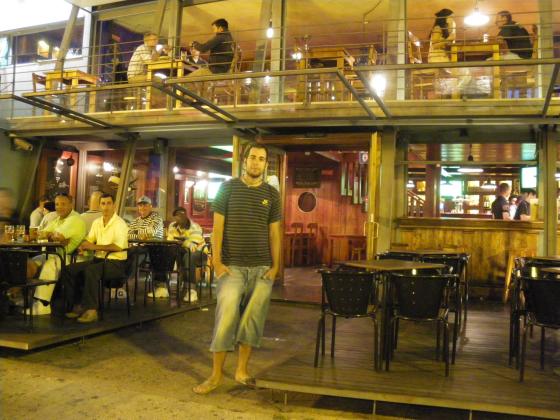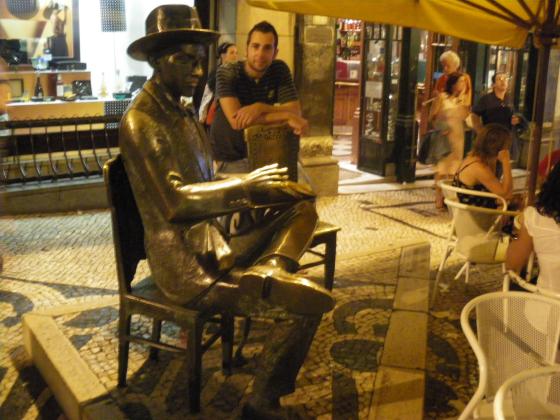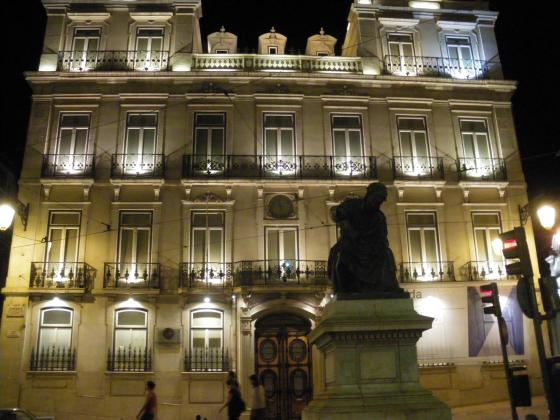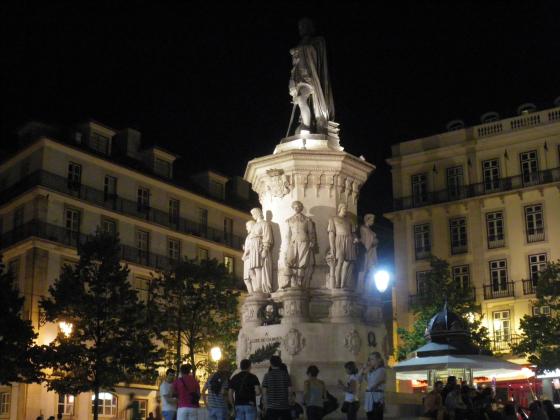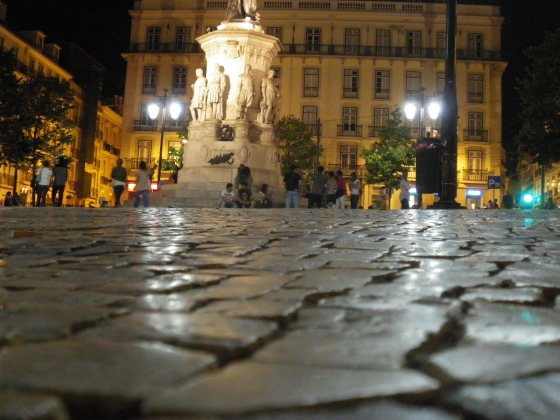district of narrow streets, alleys, multi-ethnic and full bar!In the past the area was a meeting place for intellectuals Portuguese, in fact here we can find several statues of literary figures : António Ribeiro, called the Chiado (from who derives the name of the district), and in front of him Fernando Pessoa, a famous Portuguese poet of the 20th century , sitting at a table outside the Café Brasileira. Across the street there’s the monument to Luís de Camões , the epic poet of the 16th century.
A Brasileira, we said.An old and famous cafe’: it was opened in 1905 as a store selling the ” genuine Brazilian coffee ” from the Minas Gerais state. The shop sold many other products, such as oil, flour, tea, pepper and wine.It was renovated two times over the years, becoming a real bar. The interiors were decorated in Art Deco style. In the sixties, the artworks were moved to the Museo do Chiado. In 1997 the Portuguese authorities, by ordinance, classified A Brasileira in the ” Portuguese architectural heritage ” as “Building of public interest “


